A Tour of the Institute of Marine & Environmental Technology: Bay Research is the Backbone of Science Communication
Adriana Schulman ·As the largest estuary in the United States, Chesapeake Bay is a highly productive habitat that garners much interest for study.1 Whether focused on human dimensions, the ecosystem, or wildlife, academics study the watershed for the benefit of the people and hundreds of plant and animal species that live within it. Through scientific research and outreach, the University of Maryland Center for Environmental Science (UMCES) and the Institute of Marine & Environmental Technology (IMET) embody this goal.
IMET is located within Baltimore’s Inner Harbor, a location that affords its scientists access to both the bay and urban residents of the watershed. In fostering solutions for human and environmental health, IMET provides lab facilities and office space for research within the University System of Maryland, and also supports life and environmental science startup companies.2 By bringing together academia and industry, diverse groups of scientists can co-create solutions for the benefit of the community.
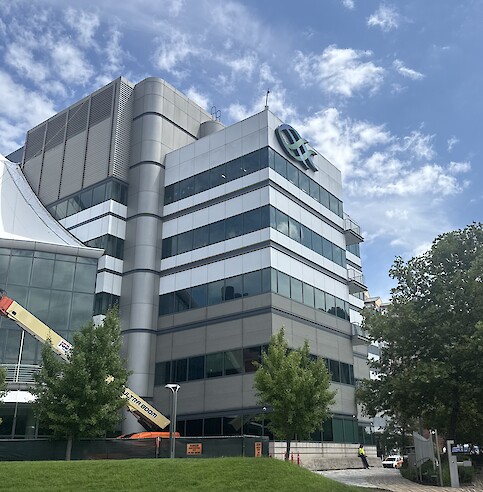
IMET has three main research focuses: human and ecosystem health, sustainable fisheries, and bioenergy. IMET research in bioenergy involves the study of microalgae and cyanobacteria, small aquatic organisms, and how they produce lipids and hydrocarbons.3 The biomass that microalgae produce can be converted into energy and is considered renewable. Much of IMET’s work focuses on making this process more efficient.3 As an intern with the Integration and Application Network (IAN) at UMCES, I was able to tour IMET, learn about their research, and interact with some of their scientists.
Arriving at IMET, I noticed the water in the Baltimore harbor was green in color, an occurrence I chalked up to being algae. Dr. Eric Schott, associate researcher at IMET and our tour guide, informed us that the green color is due to what’s called a pistachio tide. He informed us that this phenomenon occurs due to sulfur-producing bacteria brought to the surface as a result of a thermal inversion.4
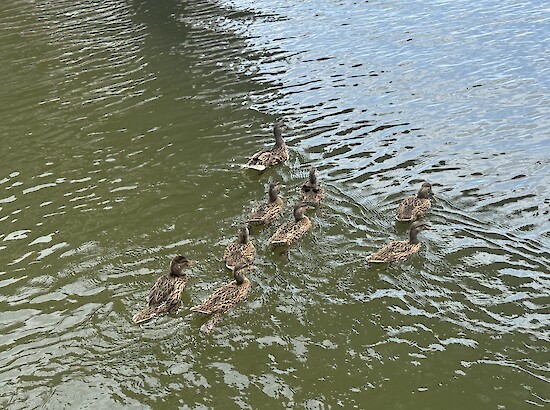
This thermal inversion occurs when a sudden drop in temperature in the evening can cause warmer surface water to cool rapidly and sink. This occurs as the rapidly cooled surface water is now more dense than the water at the bottom of the harbor, so this bottom water is displaced and rises.4 When the sulfur bacteria in the bottom water rise and are exposed to direct sunlight, they produce a sulfur smell and make the water look green.4 The tour had just begun, and I had already learned something new!
Next, we visited Beth Casagrande, a summer graduate intern in Dr. Schott’s lab, who showed us her research on filter feeders in the bay, including dark false mussels, barnacles, and the eastern oyster. Filter feeders are organisms that consume organic particles from water that passes by or through them.5 Additionally, oysters and mussels can clean the water that passes through them by removing plankton and bacteria.5 In studying the presence and filtration rates of these organisms, there is hope to expand their water filtering duties in the bay. In wrapping up her data analysis, Beth was also able to show us the camera rig and videos she used to observe her sample areas of dark mussels within Baltimore Harbor.
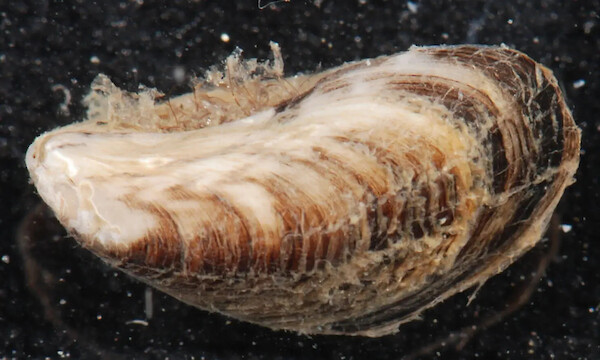
Interest in dark false mussels sparked following Hurricane Isabel in 2003, which some believe swept the mollusks north from the Chesapeake’s mid bay.6 It was following this event that water clarity drastically improved in more northern parts of the bay, as studies suggest this result was due to the high presence of dark false mussels.6 Given this occurrence, Beth and other researchers continue to research the species to better understand this relationship.
Later, we entered a lab with several DNA sequencing devices, of which Dr. Schott informed us that IMET had been amassing for years. It is these technologies that allow IMET scientists to analyze genomes of marine and estuarine organisms. By sequencing DNA, scientists are able to understand the genetic makeup of the selected organisms, identify genetically based markers of disease, and differentiate species from one another.
Inquiring why IMET scientists sequence genomes, I learned that it was IMET scientists who fully sequenced the blue crab genome. In sequencing the genome, scientists at IMET hoped to uncover the genetic characteristics that influence the reproductive abilities of female blue crabs.7 If a genetic link to reproductive success can be found, it is possible to select for this trait and build a blue crab population that can reproduce at levels that support themselves and human consumption.
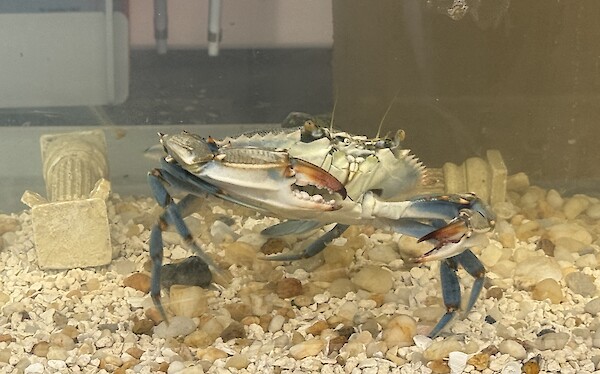
Lastly, we were able to visit the Aquaculture Research Center, where scientists are working to optimize land-based and fully contained aquaculture systems. Aquaculture is the practice of raising aquatic organisms for human consumption in a controlled environment.8 At IMET, the facilities are land-based and ensure the system is more sustainable as it recirculates the water used.9 IMET is also developing algae-based feed for aquaculture-raised fish. Plant-based feed has the benefit of being able to sustain aquaculture without removing resources from wild fisheries.9 By investing in these research areas, IMET and UMCES work toward a healthy Chesapeake Bay that supports the future of food production.
As an IAN-UMCES intern, it was a pleasure to tour the facilities at IMET, especially given that the science communication at IAN is grounded in work like that done at IMET. It was important to be reminded of all the effort that goes into studying the bay and in creating new scientific knowledge. Because of the work of bay scientists, the public can understand the ecological state of the bay. Environmental science is truly a partnership with and collaboration among scientists, communicators, policy makers, the public, and other stakeholders. This co-creation of science is vital in fostering an informed and empowered citizenry. Working with UMCES has allowed me to see that this process is being applied and realized across the whole watershed.
References:
- National Oceanic and Atmospheric Administration. (2020). Where is the largest estuary in the United States? https://oceanservice.noaa.gov/facts/chesapeake.html
- Talbert, T. (2024). 2023 Annual Report Institute of Marine and Environmental Technology. https://storymaps.arcgis.com/stories/78bcdec524904832830f55cb3ff7bb04
- Energy, Water & The Environment. (n.d.). Institute of Marine and Environmental Technology. Retrieved August 7, 2025 from https://imet.usmd.edu/energy-climate-change-global-health
- Pistachio Tides: An Explainer. (2023). National Aquarium. Retrieved July 28, 2025 from https://aqua.org/stories/2023-03-20-pistachio-tides-an-explainer
- Perez, J. (2022). How Does Filter Feeding Work? https://oceanconservancy.org/blog/2022/08/04/filter-feeding-work/
- Goldman, E. (2007). The other filter feeders: Mussels, clams, & more. Chesapeake Quarterly, 6(2), 4–7. https://www.chesapeakequarterly.net/V06N2/main/
- IMET scientists crack blue crab’s genetic code. (2021). Institute of Marine and Environmental Technology. Retrieved July 29, 2025 from https://imet.usmd.edu/news/imet-scientists-crack-blue-crab%E2%80%99s-genetic-code
- United States Department of Agriculture. (n.d.). Aquaculture. https://www.usda.gov/farming-and-ranching/aquaculture#:~:text=Aquaculture%20is%20the%20production%20of,ease%20burdens%20on%20natural%20resources.
- Sustainable Seafood Production. (n.d.). Institute of Marine and Environmental Technology. Retrieved July 29, 2025 from https://imet.usmd.edu/sustainable-aquaculture-production
About the author
Adriana Schulman
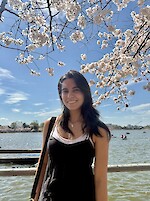
Hello! My name is Adriana Schulman, and I am a rising sophomore majoring in Environmental
Science and Technology at the University of Maryland! Academically, I am interested in how
people interact with, and are affected by the environment and wildlife. I am very excited to
explore these and other topics with IAN as a summer intern. As for when I’m not studying, I
enjoy hiking, climbing, and creating art!
Next Post > A Look Inside a Delmarva Land and Litter Collaborative (DLLC) Workshop
Comments
-
Alauna Davis 4 months ago
Wonderful work!

